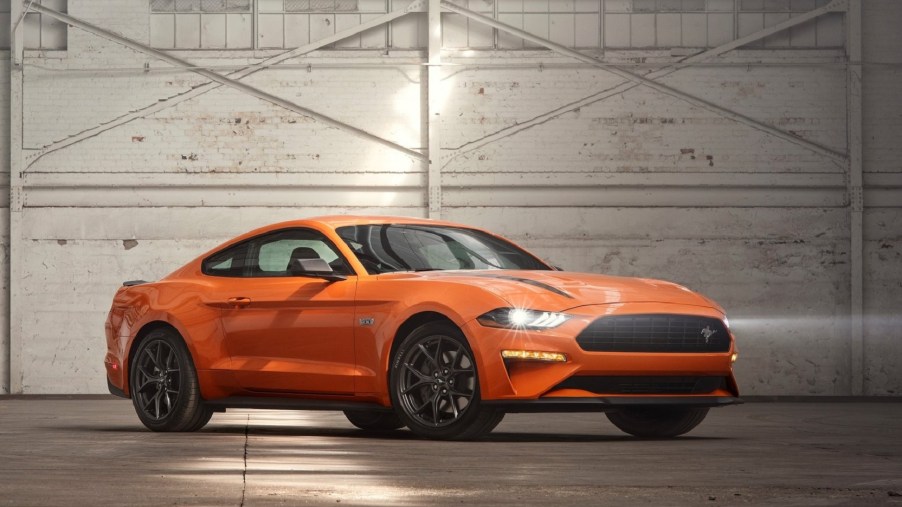
Is the 2020 Ford Mustang EcoBoost HPP a Better Sports Car Than the 2021 Toyota Supra 2.0?
In the past, a four-cylinder engine in a muscle or pony car spelled disaster. That’s not the case with the latest Ford Mustang. Indeed, the Ford Mustang EcoBoost is something of a performance bargain. And that’s before adding the High Performance Package. But can a pony car really hang with something designed from the beginning as a sports car? For example, the four-cylinder 2021 Toyota Supra 2.0? According to Motor Trend, it can.
How does the 2020 Ford Mustang EcoBoost HPP compare to the 2021 Toyota Supra 2.0?
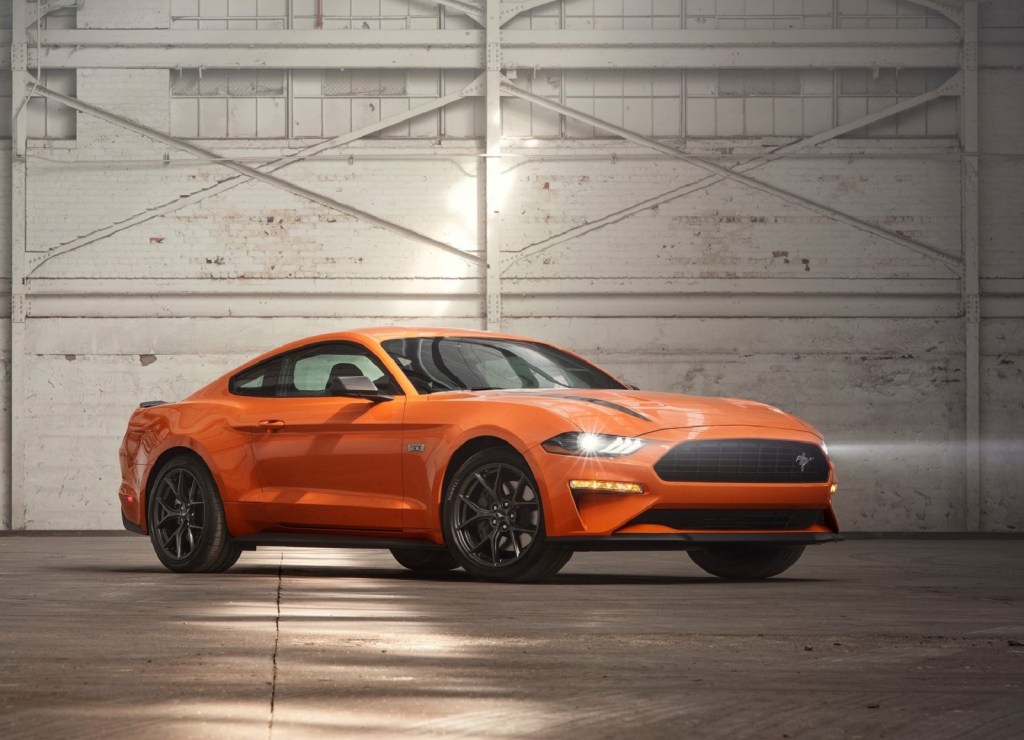
Both the 2020 Ford Mustang EcoBoost HPP and the 2021 Toyota Supra 2.0 are rear-wheel-drive turbocharged four-cylinder coupes. But while they may be broadly similar, they differ in a few key areas.
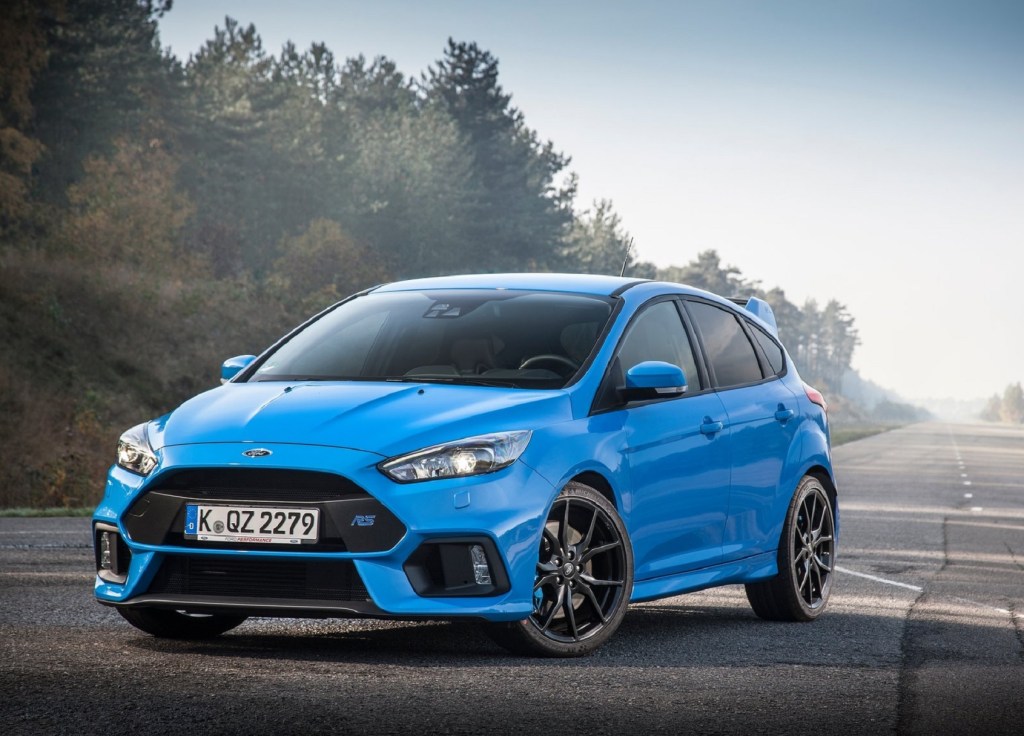
Like the base Ford Mustang EcoBoost, the HPP-equipped model has a 2.3-liter turbocharged four-cylinder engine. However, it’s actually the engine from the Ford Focus RS, albeit retuned for RWD duty, Roadshow reports. So instead of 310 hp and 350 lb-ft, the Mustang EcoBoost HPP has 332 hp and 350 lb-ft, Motor Trend reports.
In addition to the High Performance Package, there’s also a Handling Package available, Car and Driver reports. The HPP gives the Ford Mustang EcoBoost larger front brake rotors, a limited-slip differential, a strut-tower brace, upgraded springs, a larger radiator, a thicker rear anti-roll bar, and retuned ABS, stability control, and power steering. The Handling Package adds magnetic dampers, an even stiffer anti-roll bar, upgraded brake pads and limited-slip differential, wider wheels, and Pirelli P Corsa summer tires.
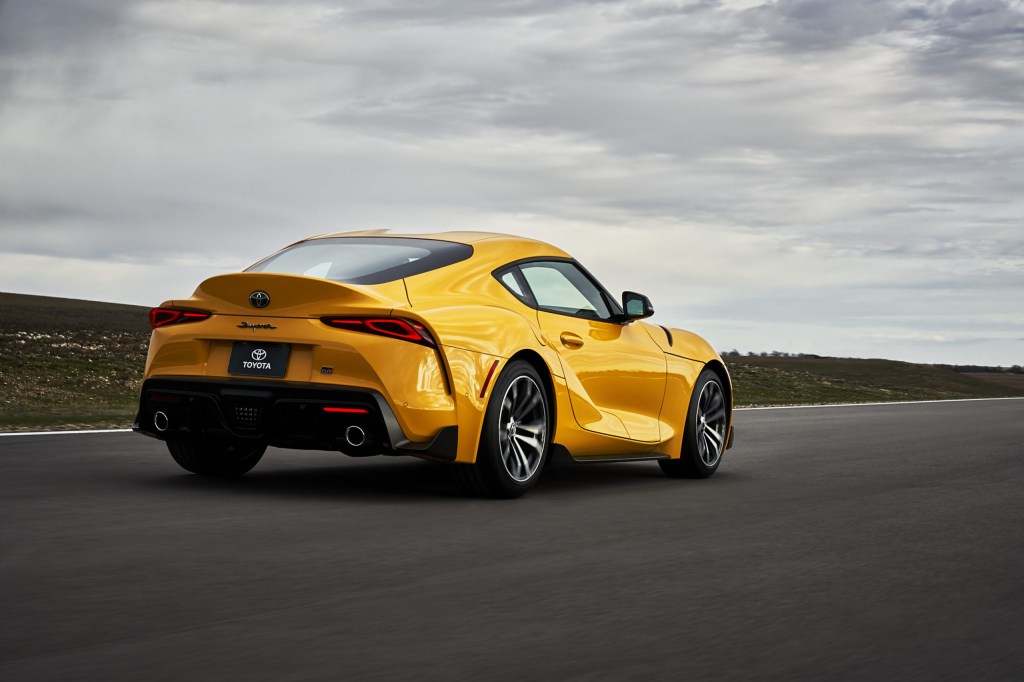
The 2021 Toyota Supra 2.0 is a bit de-contented compared to the Supra 3.0, Car and Driver reports. It doesn’t have the adaptive dampers or active limited-slip differential, though it does have a mechanical version of the latter, Automobile reports. It also has smaller wheels and front brake rotors, and a different suspension setup.
And most crucially, the Toyota Supra 2.0 has a four-cylinder engine rather than a six-cylinder engine. It’s a 2.0-liter turbocharged four-cylinder rated at 255 hp and 295 lb-ft. However, while it’s down on horsepower, it’s also about 219 pounds lighter than the Toyota Supra 3.0, Roadshow reports. And it’s about 450 pounds lighter than the Ford Mustang EcoBoost, Motor Trend reports.
Motor Trend is tempted by both the Ford Mustang EcoBoost HPP and Toyota Supra 2.0
With the lower weight and its 8-speed automatic, the Toyota Supra 2.0 is faster in a straight line than the Ford Mustang EcoBoost HPP. In Car and Driver’s testing, it hit 60 in 4.7 seconds. Meanwhile, Car and Driver estimates the Mustang could, at best, go 0-60 in 4.9 seconds.
However, while the Mustang EcoBoost offers a 10-speed automatic, it has something the Supra lacks: a 6-speed manual. But that’s not the only difference between how the Mustang and Supra drive.
You can feel the difference in the two cars’ weights and sizes, MT reports. The Toyota Supra 2.0 isn’t just lighter, it’s smaller and sharper. Even with the HPP and Handling Package, the Ford Mustang EcoBoost rolls a bit more than the Supra. And its steering isn’t as quick.
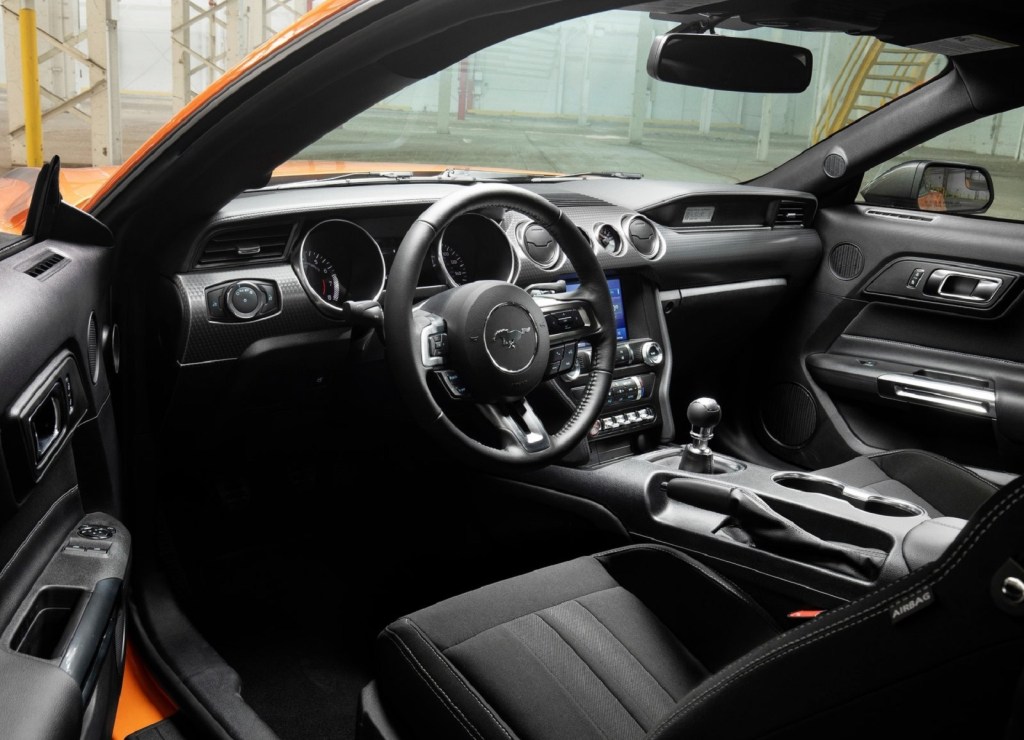
However, even with its suspension upgrades, the Mustang rides better than the Toyota Supra. The latter car’s rear end is easily unsettled over road imperfections. Plus, even for a sports car, the Supra’s cabin is tight, The Drive reports. The Ford Mustang EcoBoost’s rear seats aren’t large, but it at least offers them.
Also, while it may not be quite as sharp as the Supra, with the HPP and Handling Package, the Ford Mustang EcoBoost is fun to drive, Jalopnik reports. The steering is lighter than in the V8 models, but it’s communicative and still fairly quick. The whole car feels agile, and grips roughly as hard as the dearly-departed Shelby GT350, Motor1 reports.
Which is the better sports car?
In terms of outright agility, and even straight-line speed, the 2021 Toyota Supra 2.0 edges out the 2020 Ford Mustang EcoBoost HPP. However, in its comparison, Motor Trend preferred the Ford over the Toyota. The Supra’s rear suspension simply isn’t as comfortable in the real world. And while the Mustang isn’t quite as sharp, it’s still a decent sports car in its own right.
It’s also a cheaper sports car. MT’s comparison involved a Ford Mustang EcoBoost Premium, which starts at $31,685. The High Performance Package adds $4995 and the Handling Package adds $1995. Meanwhile, the 2021 Toyota Supra 2.0 starts at $42,990. And it doesn’t even offer Android Auto.
Ultimately, choosing between them is a matter of personal preference. The Toyota Supra is the more focused of the two. But the Ford Mustang EcoBoost trades some of that focus for more overall appeal.
Follow more updates from MotorBiscuit on our Facebook page.


